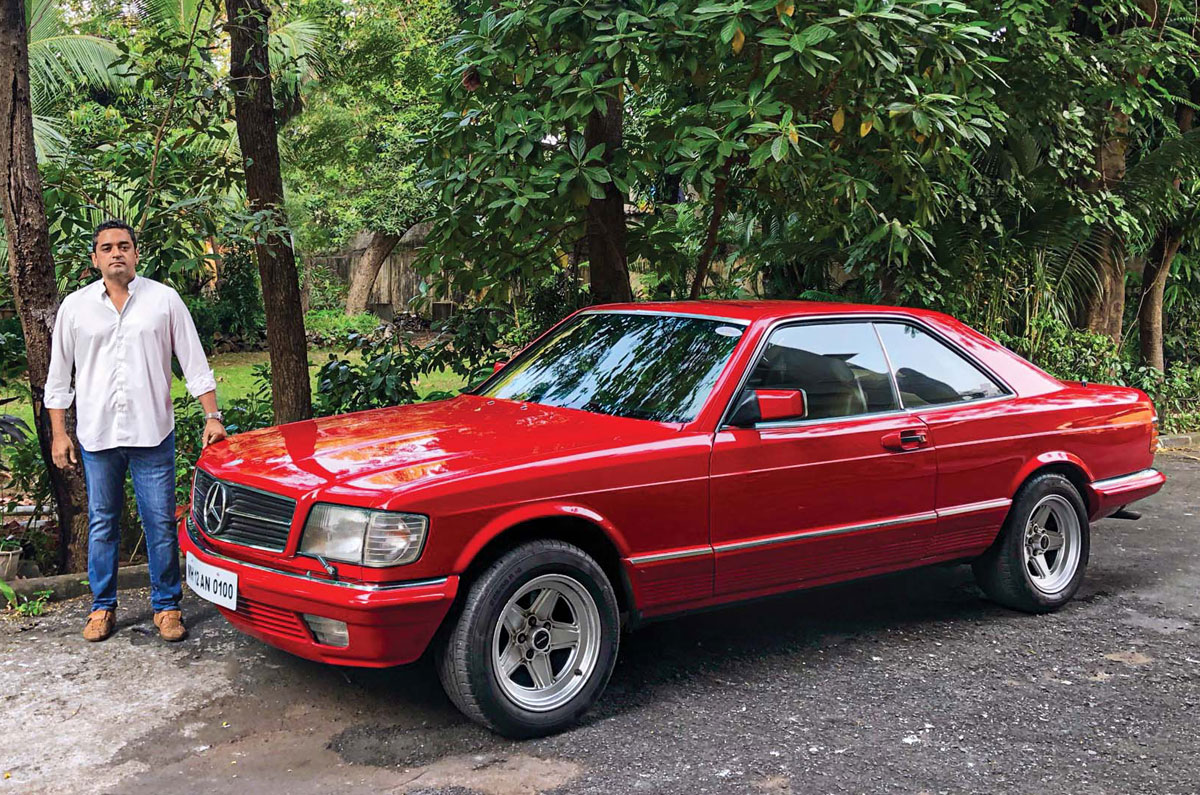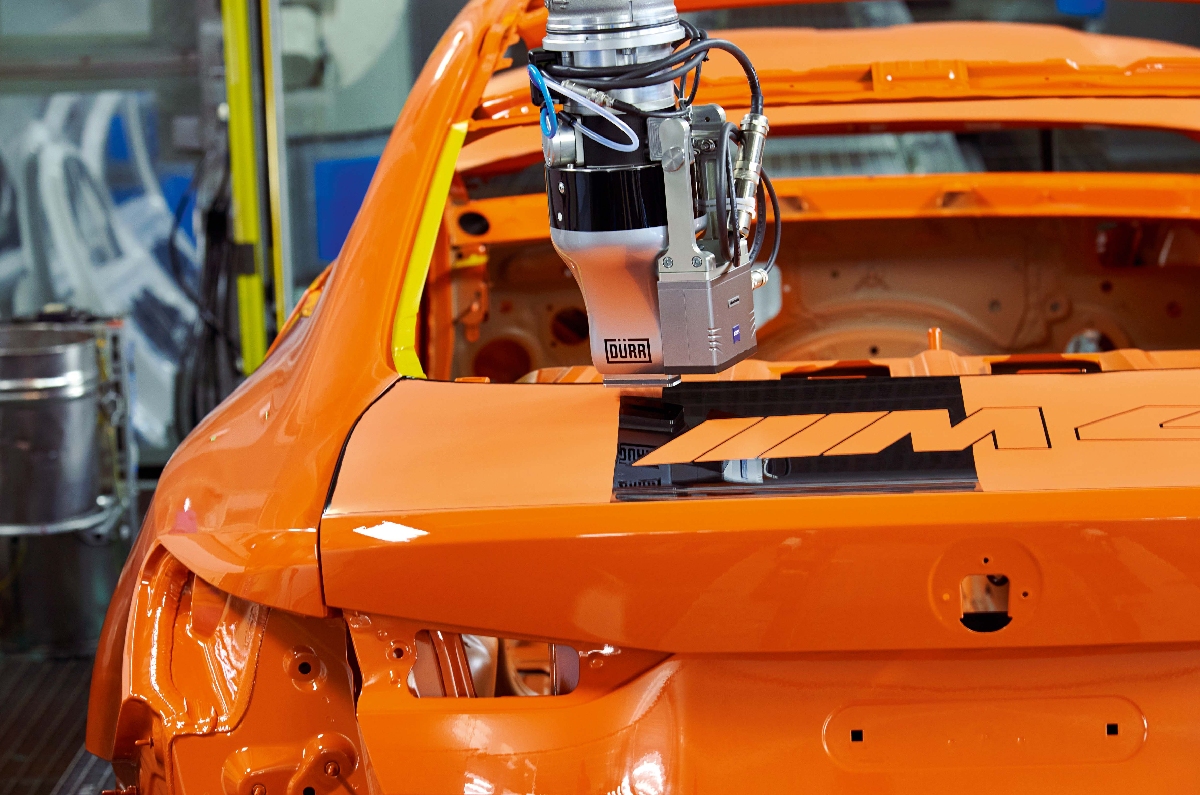The plan is simple. Ruman and I are to drive down to Goa for a long overdue reunion with friends who’ll be joining in from all over the country. It’s a route I’ve done many times before, but what will make this trip a bit more special is my choice of wheels. I’ve got the all-electric MG ZS EV for the holidays and this is the perfect opportunity to see how good (or bad) it is as a long-distance machine. The ZS EV has a certified range of 419km on a full charge and we’ve even done our standard range tests in which the MG performed well, but today’s journey will be anything but standard. There are range-sapping climbs on the route, winding ghat roads, and then there’s the small matter of the payload – 200kg+ of Ruman and me, and our luggage. Talking to EV owners has helped me chalk out a route that will comfortably get us to charging stations on the way. ‘Comfortably’ being the operative word. I have no plans of hypermiling and the whole idea is to drive the ZS EV as a ‘normal’ car. The only concession is that the car will be in Eco mode and I’ll also be mindful with throttle inputs. No lead-footed driving today, no sir.
Stealth Mode
It’s an early morning start on a nippy December day and it’s still so dark that 6am can very well pass off as 3am. An overnight charge at office has yielded a 100 percent charge (a full charge costs about Rs 320), so it’s all systems go. It’s an easy and quick drive to Ruman’s home and I roll the MG towards him like a seasoned valet. He doesn’t take notice. That’s one part because of the ZS EV’s silence and one part because he doesn’t expect me to show up in an EV to begin with. Ahem, I may have glossed over that part in previous conversations with him about the trip.
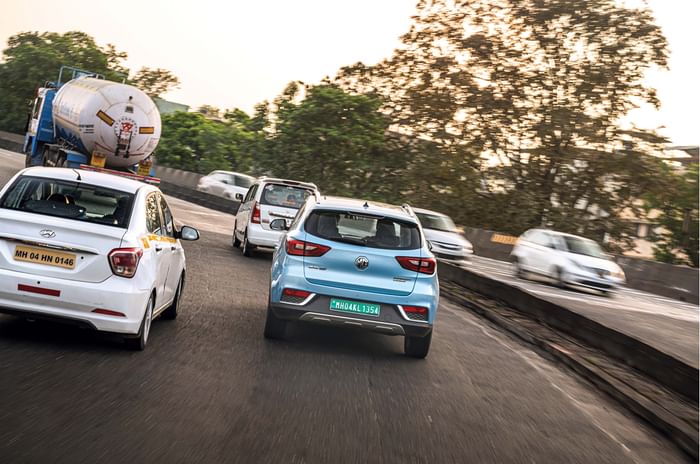
He grunts in response to my cheerful “good morning” and follows it up with a salvo of questions: “Why would you bring an EV?”, “Will we reach tonight?”, “Where will we charge?”…and on, and on. He’s not an EV guy, that’s for sure. Thankfully, the Grinch falls asleep soon enough and what I have is some silent driving time. It’s dawn by the time we make it to the Mumbai-Pune Expressway. The first part of the expressway is smooth sailing, but I do notice a considerable drop in range on the climb to Lonavala. It’s a known fact that EVs don’t like fighting gravity, but we’re still well in the clear in terms of range. The ZS EV’s relatively large 44.5kWh battery pack means there’s no cause for concern.
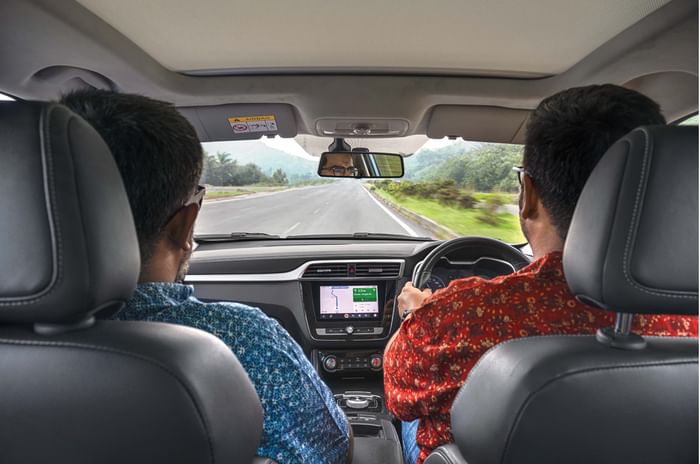
It’s bright by the time Ruman re-emerges and the nap has sure done his mood some good. He wakes saying he hadn’t slept so deeply in a car in years, but is quick to dismiss my claim of my smooth driving as the reason. It’s the car’s silence that did the trick, he says. I don’t argue because the ZS EV is genuinely quiet. There’s no engine noise of course, but the general level of sound deadening is really impressive. The silence inside does amplify the sound of Ruman’s rumbling stomach and soon he requests a stop for food. It’ll be an out of turn stop as per my original plan, but we do work out a gentleman’s agreement to stop near a charging station. “Hello MG” summons the onboard assistant and while the system suggests the nearest MG showroom for a stop, Ruman has a very specific vada pav place in mind. A mental map suggests it’s near a Tata Power charging station, so soon it’s time for stop number 1.
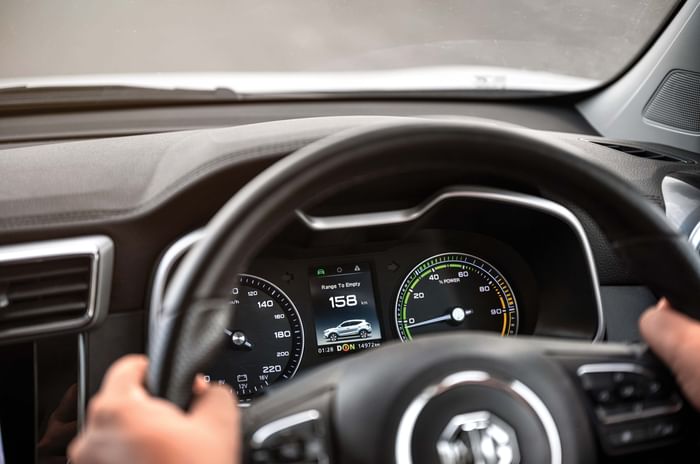
Vada Wow
As Ruman heads out for deep fried delight, I plug the ZS EV into the Tata Power 25kW DC charger for a 15min charge. The 136km journey from Mumbai to Tathawade on the outskirts of Pune has used 47 percent charge and the 15min top-up adds 13 percent to the range. What’s nice is that the whole process of charging is easy and the Tata Power app is straightforward to use. The Rs 115 cost is deducted from my prepaid wallet; there’s no physical payment. Ruman strolls back triumphantly and we’re back on the road.

NH4 that serves as an arterial road for Pune is crowded at most hours, but we’re well and truly in the meat of traffic now. The usual waypoints like the Katraj Tunnel seem farther away than usual and even the short but steep Khambatki Ghat further up the road is a proper crawl. Note to self – leave earlier the next time around. The pace picks up once we’re back in the plains and there are enough stretches to make the most of cruise control too. I like that the ZS EV has enough zip even in Eco mode. Adhering to the 80kph speed limit also has the ZS EV running in its efficient zone.
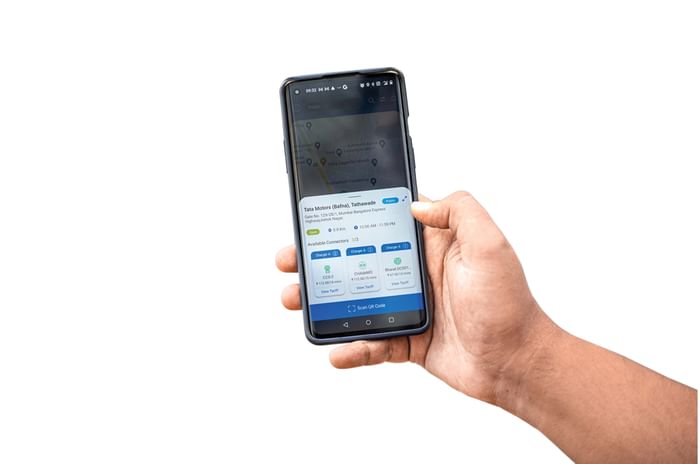
Our stop for lunch is at Amrai Resort on the outskirts of Satara. It’s a sweet place but is a designated stop mainly because it’s home to a 25kW DC charger. Over our 45min charge, the ZS EV gains 39 percent battery (to 54 percent) which will comfortably get us to our next stop at Kolhapur some 108km away. Kolhapur is the last big town on the highway before we’ll turn off at Nipani so it’s essential to charge here. We make good time from Satara and pull into the sprawling MG Kolhapur dealership on the highway. Car plugged in to the 25kW DC charger, we head into the very welcoming MG Cafe for a coffee or three. I keep a tab on the charge status via the Tata Power app and after a good hour of coffee and conversation, reckon 82 percent charge will see us through to the end. The 66 percent charge cost Rs 576.
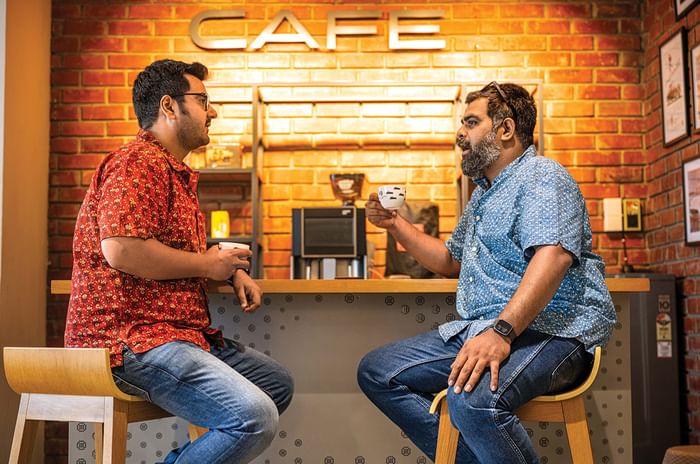
Role Reversal
I’ve seen Ruman come around through the day and he finally asks if he could drive. It’s very soon into his stint, but I can tell he’s enjoying himself. “I can get used to this performance!” he quips. I keep occupied on the passenger seat with the Gaana app that uses the onboard e-SIM-based internet. The light and temperature lower as we climb gradually in altitude, and it’s an opportune moment to introduce Ruman to the ZS’ party trick – the “Open the sunroof” voice command. The panoramic sunroof retracts, giving me an undisturbed view of some mesmerising contrails above.
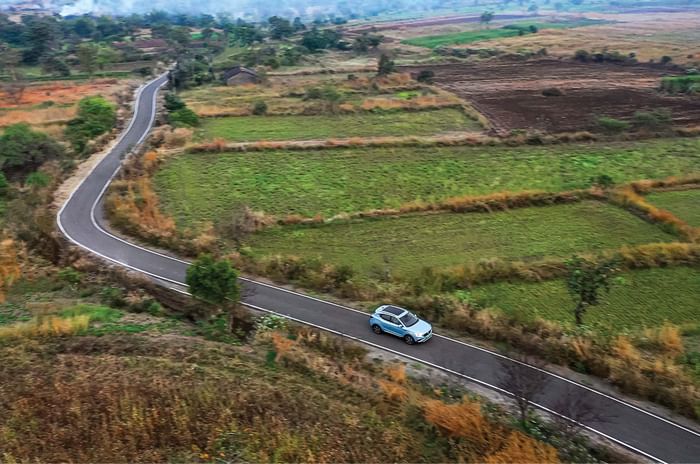
The turn off from NH4 at Nipani is in the last light of the day but also marks the start of the ‘home stretch’, as route veteran Ruman puts it. Over the next 140km, we’ll wind our way down Amboli Ghat, cross Sawantwadi and finally hit Goa. The journey down is great for charge, with regeneration coming into play big time. We lose little in indicated range and it almost feels like driving free. Ruman also likes how the ZS steers, and gives a word of appreciation for the ground clearance too. There are some nasty potholes on the way, but the ZS EV doesn’t touch anywhere. And while Ruman’s a safe driver, it’s reassuring to know there’s the added protection of ESC and six airbags.
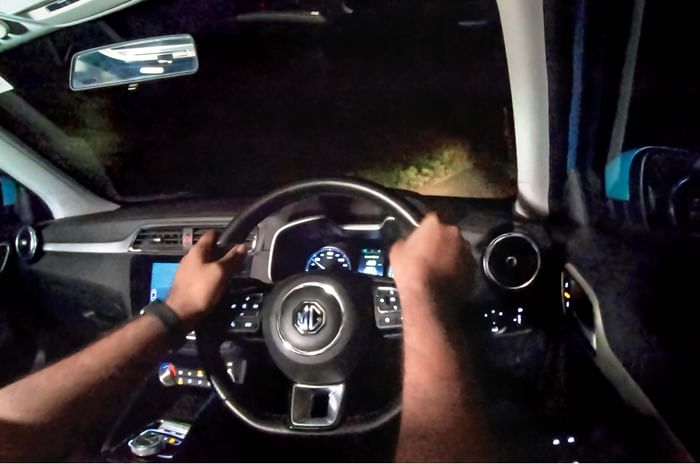
We know we’re close to our final destination when the roads get narrower and things just get, well, slower. Goa is decked up for Christmas and looks so, so charming. The final turn leads us to what will be home for the next few days, Villa Siolim by amã Stays and Trails. Our jaws drop in sync when we drive in through the gate. The 75-year-old bungalow looks like a film set, and behind the main door are five rooms, a swimming pool, a pool table, a... you get the gist. It’s even better in real than it looked in the pictures, but the very reason it was on my radar? It has a 7.2kW wall box charger! The small but crucial detail makes this a property of interest for anyone with an EV. And it’s the reason why we weren’t palpitating when the charge dropped below 10 percent towards the very end.
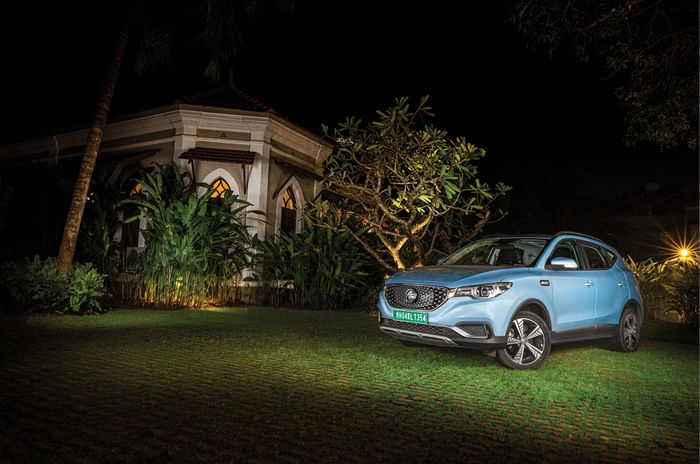
You can do it too
Before we get all comfy, there’s one thing left to do. Put the car on charge. And that’s what gets me thinking. The journey wasn’t hard! A quick calculation reveals we spent just over Rs 1,000 charging the ZS enroute. Including the full charge back in Mumbai, we spent just over Rs 1,300 on charging. For reference, the same journey in a petrol SUV would have cost about Rs 4,500, while a diesel SUV would need upwards of Rs 3,200 of fuel. There’s also a satisfaction in doing the journey in a zero emissions vehicle. In all, the journey took just under 15 hours, including 2.5 hours for food and charging stops. The numbers also suggest we’d have managed between 230-250km on a full charge which is fair given the topography and weight.
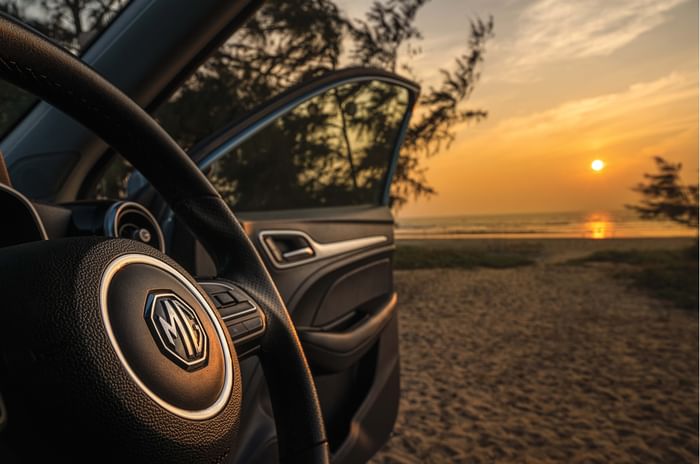
The big takeaway from the trip is that with a bit of advance research for stops, a road trip in an EV isn’t really a biggie. And with more (and faster) chargers popping up along our highways, things are only going to get better. Range anxiety? I’m optimistic it’ll become an outdated concept sooner rather than later.
| Charging stops | |||||
|---|---|---|---|---|---|
| Mumbai | Pune | Satara | Kolhapur | Siolim, Goa | |
| Distance | 136km | 132km | 108km | 187km | |
| Average speed | 52kph | 51kph | 57kph | 36kph | |
| SOC at arrival | 53% | 15% | 16% | 9% | |
| Type | AC wall box | 25kW DC charger | 25kW DC charger | 25kW DC charger | |
| Charging time | Overnight | 15min | 45min | 1hour 16 min | |
| Battery charged | 100% | 13% | 39% | 66% | |
| Charging cost | Rs 320 | Rs 115 | Rs 325 | Rs 576 | |












